British brand Hope Technology has announced a prototype of its first time trial bike, dubbed the HB.TT. It’s a road-ready version of the much talked about Hope x Lotus HB.T – the track bike being ridden by Team GB at Tokyo’s Izu velodrome.
The bike retains many of the radical design elements that put its fixed-gear sibling in the spotlight. These include arching, blade-like seat stays, an otherworldly dual-crown fork and a super-wide front profile that puts it at odds with every other TT bike currently on the market.
Like the HB.T, Hope’s new prototype takes full advantage of recent UCI rule changes that permit forks and seatstays to be up to 8cm in width.
This has allowed the brand to create what gravel enthusiasts would call ‘extremely generous tyre clearance’, but Hope says it’s more to do with reducing drag and optimising how the bike and the rider’s legs interact in terms of aerodynamics.

It’s certainly something to behold and is unlike anything else out there. But could the HB.TT and its progressive design be a sign of things to come for the bike industry at large?
This is only the first prototype, but if all goes well with further aero testing and rider feedback, the HB.TT will go to production next year, retailing for an estimated £12,000-£15,000. That hadn’t always been the plan though. In fact, according to Hope’s design engineer, Sam Pendred, the whole thing started off as little more than a passing comment.
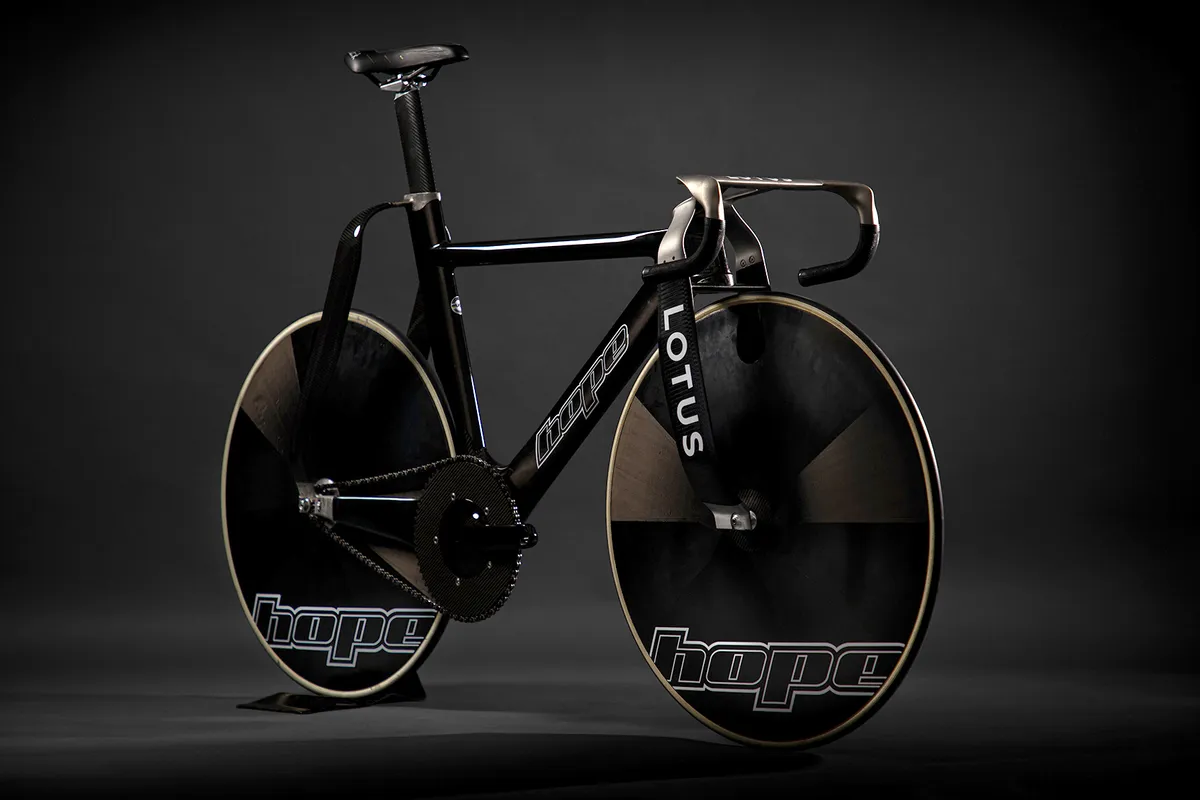
“Ian [Weatherill, Hope co-founder] came up to me a couple of years ago when we were working on the HB.T and said, ‘do you think we could just put a couple of sprockets on the back and a disc brake? We could ride it around then.’ So, we started trying to 3D print some dropouts to accommodate that,” Pendred tells BikeRadar.
“As we went further, we began to think that maybe we should take it a bit more seriously. Lockdown really helped with that as it gave us a good chunk of time to develop it. So, from lockdown through to now it’s just been about getting ready with that first prototype.”

At one point, there was a chance the bike could’ve gone to the Olympics with British riders along with the HB.T. But, as it transpired, turning an Olympic-ready track bike into an Olympic-ready TT bike is a bit more complicated than just slapping a few gears and some brakes on and calling it a day.
“It was a bigger nightmare than I thought it would be,” says Pendred. “Gears and Di2 specifically.
“Initially, when we were playing around with putting sprockets on the track bike, we thought, ‘hey, let’s make life easy and go 1x,’ as that’s the way the trend seems to be going with TT bikes at the moment. But we were working with British Cycling, who were keen to have the option of a second chainring.
“That meant we had to incorporate a front derailleur, and, as a result, had to completely remodel the back-end of the bike. Fitting a front derailleur affects the seat tube, it affects the chainstays – it affects lots of things. So there was a considerable amount of work in that.”
It’s worth noting at this point the absence of Lotus in the design of the HB.TT. Hope wanted complete creative freedom on this project to make something entirely of its own. The downside was that this meant designing and producing a new fork.
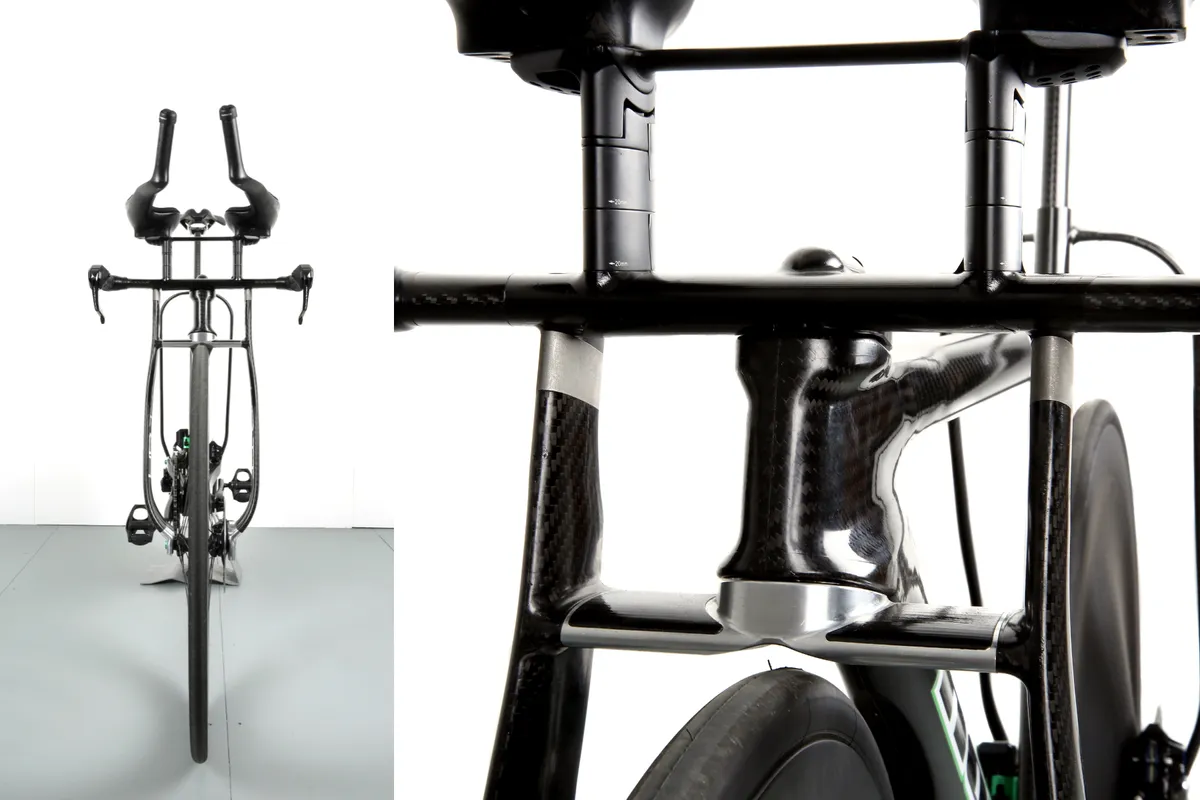
“We took the fork design that was used on the track bike and adapted it so that we could make it ourselves,” says Pendred. “We’ve got Chris Clarke [a composites expert who worked on the UKSI bikes for Team GB in 2012] here who has lots of knowledge about how to use the carbon, but we also have the benefit here at Hope of being able to machine aluminium.
“So, we made a hybrid fork using the best bits we can do with aluminium and the best bits we can do with carbon. When we compared it with the track fork in terms of weight, there wasn’t much in it, even though we now have the capability to run a disc brake on this one. I think it was only 50 or 60g.”
Being a small, niche brand with the ability to machine and manufacture all manner of parts in-house is Hope’s strongest advantage over bigger industry players. However, it does come with its drawbacks, one of which was the fact the fork was so unusual that it couldn’t be used with a standard handlebar as planned.
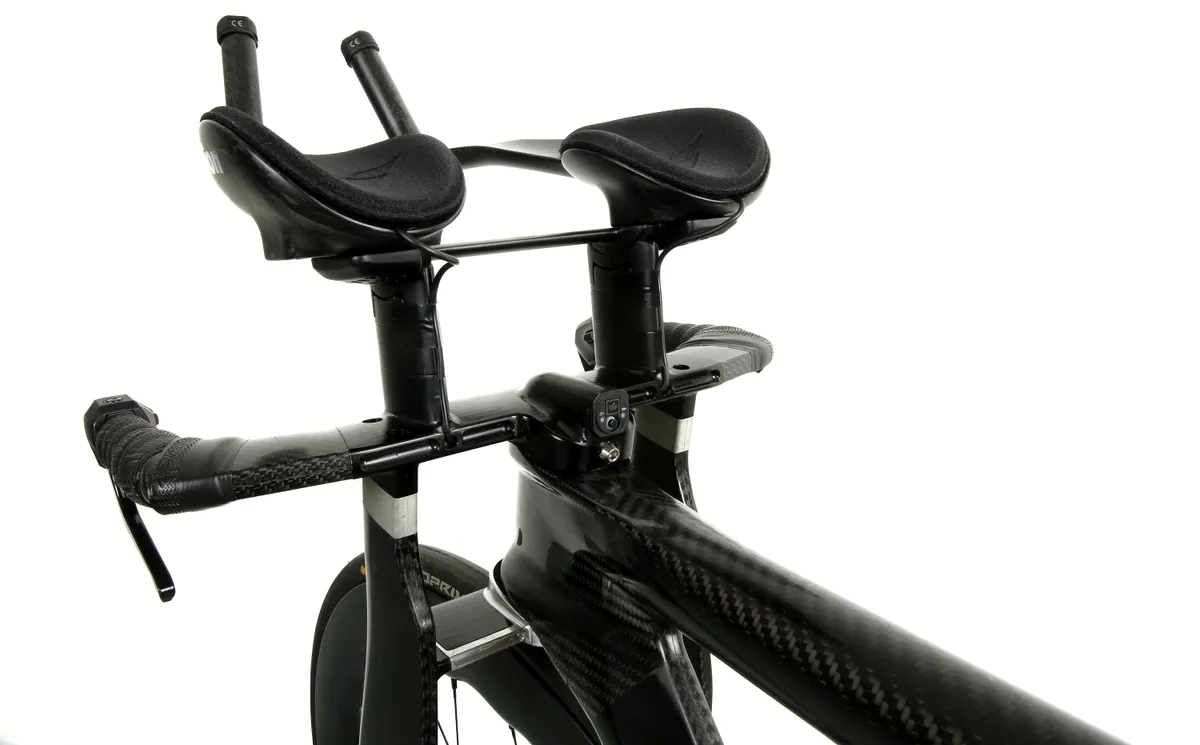
“Initially, we thought we’d use a stock handlebar to speed the process along, but we quickly realised that because of the fork design, there was no way that we could adapt it to work,” says Pendred. “So we ended up doing our own bar as well, which, with all the cable routing for the Di2, was really a full project in itself.”
So, what does Hope’s new prototype mean for the future of aero bike design? To understand that, we first need to look at what exactly makes this bike so progressive.
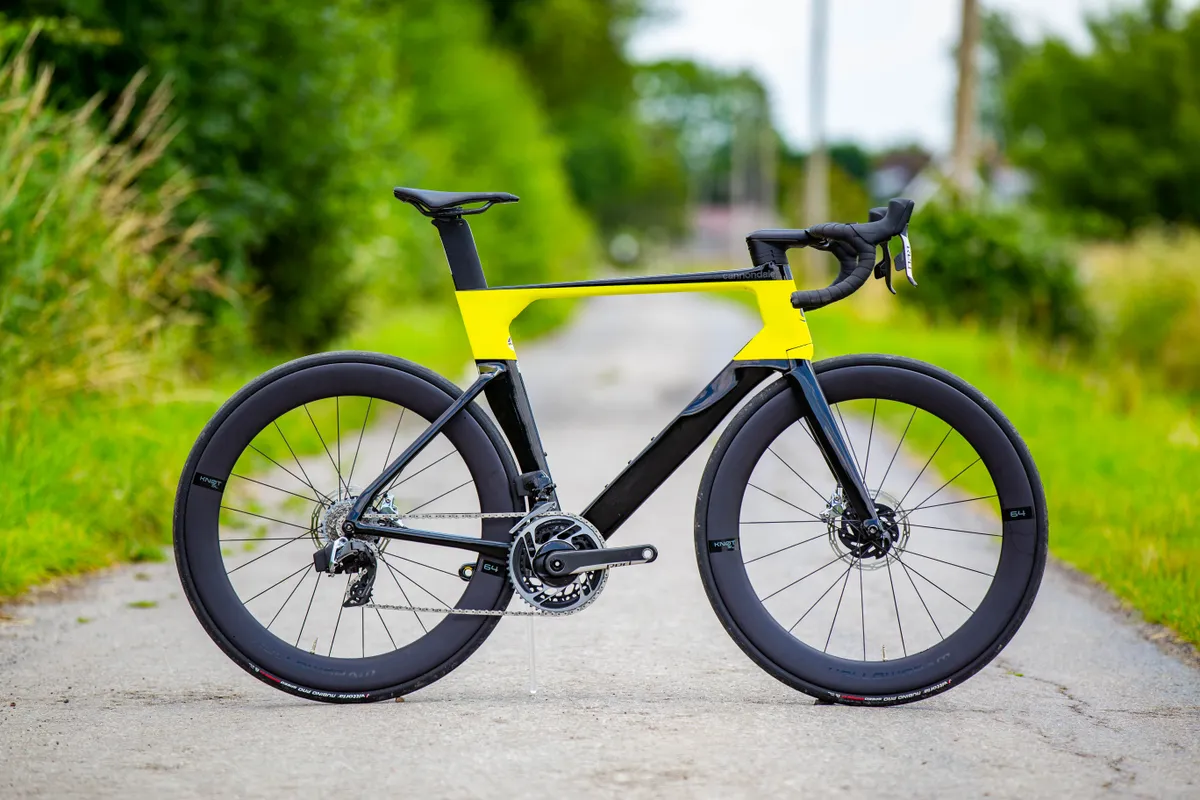
"When you look at bikes currently, they all end up looking the same,” says Pendred. “It’s because everyone is trying to achieve the same thing and tick the same UCI boxes, and when you’re testing a bike for aerodynamics, feedback always points to the same things across the board. That’s why you see so many bikes with dropped seat stays and things like that, irrespective of the brand.
“The thing that sets this bike apart is that we’ve created something that looks completely different to anything else out there, yet still conforms to the same regulations that everyone else has to follow.”
The bike also stands out in the way that it fully incorporates the rider into its design, according to Pendred. Those striking forks and seat stays don’t just look cool, they’re designed to work with the rider’s legs to reduce drag. Instead of asking, ‘how can we make this bike as aerodynamic as possible?’ Hope has asked, ‘how can we make the whole package – rider and bike – as aerodynamic as possible?’
It’s something that Dr Xavier Disley, head of AeroCoach, a performance consultancy and manufacturer of specialist cycling equipment, thinks we’ll be seeing more of in the future.
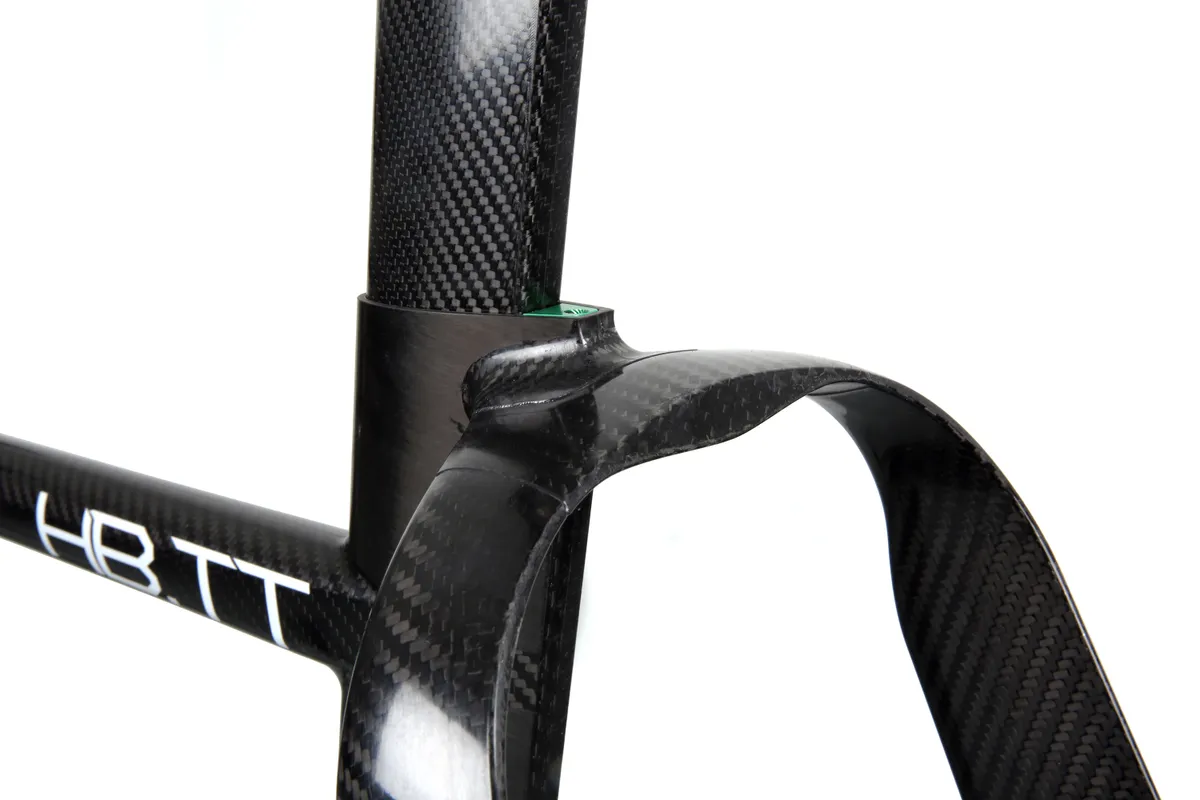
“The integration that we see on bikes like the Hope HB.TT, which is designed to manage airflow over the rider rather than in isolation, is not new, but it is more obvious than before,” says Disley. “I’d suspect more of that airflow management with the rider in mind to be the focus.
“As long as UCI regulations continue to permit widening of forks/chainstays then we may well see this being more commonplace. Chainstays have historically been a real problem for bike manufacturers in terms of aerodynamics as they are difficult to design in a manner that doesn’t increase drag significantly, especially at the junction with the seat tube.”
As touched upon, another factor that makes the HB.TT so unique is the fact that Hope is in the rare position of being able to machine its own parts in-house and is unconstrained by hitting price points or moving large numbers of product.
This has allowed the brand to be more progressive in terms of integration. It also means that the brand isn’t beholden to the same supply chains as many bigger brands, which, in the age of Brexit and Coronavirus, is hugely beneficial, not to mention better for the environment.

“Take the brake, for example,” says Pendred. “The front brake is completely integrated into the dropout and it’s our own brake that we designed. The hose runs completely internally, from the moment it leaves the lever down to where it enters the caliper.
“It’ll be interesting to see if other companies can integrate things like that. Everything is getting a lot more integrated at the moment. Handlebars, for example, used to be stock but now everyone’s using integrated bars and integrated seatposts. I do think we have an advantage though as we’re able to turn things around quickly and we’re not having to worry about selling masses.”
As for what effect this is all going to have on the aero tech within the bike industry, Dr Disley thinks only time will tell.
“The response of larger brands to the Hope bike will be driven by its market acceptance,” he says. “If Hope is overloaded with orders for a TT version of the HB.T, then yes, I’d say the industry would sit up, take notice and start to think a bit more dramatically.”
